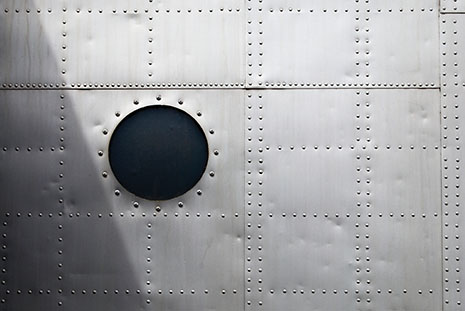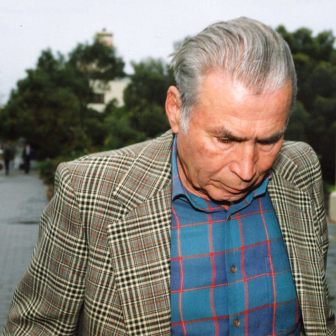Almost ten years have passed since Mamdouh Habib was arrested in Pakistan and “rendered” to Egypt. Throughout these years, Australian governments consistently denied any knowledge of Habib’s presence in Egypt. After recent events, however, these denials must be seriously questioned. In December last year, the Gillard government paid an undisclosed amount of money to Habib in return for his dropping a civil case again the government and signing a confidentiality agreement. Leaked witness statements suggest that Australian officials not only knew of Habib’s rendition but were also present when he was tortured in Egypt. And the Gillard government has finally referred the matter to the Inspector-General of Intelligence and Security for investigation, to be held behind closed doors. In this article, first published in June 2008, Andrew Lynch and Nicola McGarrity compare Australia’s treatment of Mr Habib’s allegations with the response of the Canadian government to the “rendition” of one of its citizens.
WHEN the citizen of one nation is illegally held by another, transported to a third country, tortured over a sustained period and then released without having been charged with criminal wrongdoing, how should the citizen’s country respond? In particular, how accountable are its own agencies and politicians for any role they might have played in such a sorry episode?
The answer, it seems, depends on whether you are an Australian or a Canadian. Consider the slow drip of information reaching the Australian public about how much its political leaders and bureaucrats knew at the time about the “extraordinary rendition” of Mamdouh Habib. Habib, an Australian and Egyptian dual citizen, was arrested and detained in Pakistan soon after September 11, but he was then “rendered” by the United States to Egypt and detained there for seven months. During this time, he was allegedly beaten and subjected to water torture and electric shocks. He was transferred to Guantanamo Bay in early May 2002, where he remained until his release (without charge) in January 2005. He has consistently alleged that the Australian government was complicit in his rendition and detention, and is suing the government for breach of its duty of care towards him.
As a result, a clearer picture is emerging of Australian knowledge of, if not complicity in, Habib's treatment. As late as 2005, ministers and senior officials continued to follow a strategy of what might be described as “plausible deniability.” Interviewed on the Sunday program on 13 February 2005, the foreign minister at the time, Alexander Downer, demonstrated that, at best, the government had displayed a resounding lack of interest in gathering information about the situation of Habib. “The Egyptians have at no time acknowledged that they did actually detain Habib,” he said, adding, “I don’t have any evidence that the Americans took him there. There are a lot of different ways you can get from Pakistan to Egypt.”
Yet it was revealed in mid 2008 by the current Director-General of ASIO, Paul O’Sullivan, that officials in Pakistan and Australia were aware as early as 22 and 23 October 2001 that Habib might be “rendered” by the United States to Egypt. Although a discussion involving senior officials from the Office of the Prime Minister, ASIO, AFP, the Department of Foreign Affairs and the Attorney-General’s Department allegedly resolved to oppose the rendition of Habib, it appears that only ASIO took any action to try to prevent it occurring. O’Sullivan stated that his predecessor informed the US authorities that “it was not the Australian government’s policy position to engage in practices of rendition.”
O’Sullivan’s evidence is just the latest stage in the unravelling of a web of mixed messages surrounding the government’s level of knowledge about the rendition and detention of Habib. An investigative report by the ABC’s Four Corners program on 11 June 2007 revealed further damning evidence. First, a cable was sent from an AFP officer in Islamabad on 19 November 2001 to the Department of Foreign Affairs and Trade stating that Habib “had been transferred to Egypt.” Secondly, the program asserted that two ASIO officers had travelled to Egypt in February 2002 and discussed Habib’s presence there with Egyptian intelligence.
Yet in Senate committee hearings in 2005, Robert Cornall, the secretary of the Attorney-General’s Department, insisted the government had no knowledge of whether Habib had been in Egypt – sticking to the line that his minister, Phillip Ruddock, as well as Downer and others, took during this period. Bizarrely, this did not stop the Department of Foreign Affairs and Trade writing to Habib’s wife, shortly after the ASIO officers’ visit to him, stating that it had obtained “credible evidence” that her husband was “well and being treated well.” On Four Corners, however, Habib stated that, in February 2002, “I have no nails and all my body was like a cigarette burn.” Lastly, CIA officers, with whom the ABC spoke, confirmed that it would be “unusual” for a rendition to be carried out without the knowledge and support of such a staunch ally as Australia.
In light of the recent statements by O’Sullivan, the real question has become not whether the Australian government had knowledge of Habib’s rendition and detention, but why it did nothing in 2001 to prevent the violations of Habib’s human rights and continue to do nothing today to acknowledge or remedy these violations.
THE Australian government’s response to Habib’s rendition stands in stark contrast to the Canadian government’s reaction to the rendition and detention of its citizen, Maher Arar. Arar was arrested in September 2002 while in transit at JFK International Airport in New York and questioned by US officials about his connections to certain members of al Qaeda. He was subsequently rendered to Syria, where he was detained, tortured and kept in a “shallow grave” for ten months.
On 5 February 2004, in response to a public outcry, the government announced an open inquiry into the actions of Canadian officials in relation to the rendition and detention of Arar. Despite some initial cynicism about the rationale for the inquiry, it is significant that it was not limited to an examination of the Arar incident but also examined deficiencies in the intelligence-gathering processes of the various Canadian law enforcement agencies. The inquiry found that there was no evidence that Arar had any terrorist links, and that the Royal Canadian Mounted Police, or RCMP, had provided misleading information to the US authorities that may have been the reason for his rendition to Syria.
The inquiry’s first report was released in September 2006 and had wide-ranging consequences. On 26 January 2007 the Canadian prime minister, Stephen Harper, formally apologised to Arar and announced a $10.5 million compensation package for him and his family. The report also led to the resignation of the commissioner of the RCMP and the appointment of the first civilian commissioner of that organisation. Notably, the Canadian government’s response to the rendition and detention of Arar was not limited to the domestic arena. It also expressed criticism of the United States’ practice of rendition and, even prior to the inquiry’s report being handed down, managed to secure from the US secretary of state a promise that, in future, any Canadian citizen held as a terrorist suspect would be returned to Canada. The Canadian government’s subsequent request that the United States remove Arar from its no-fly and terrorist watch-lists was dismissed outright by Washington. When he announced the compensation package, the prime minister stated that the government would continue to press the US government to vindicate Arar.
There may well be some significant differences between the cases of Arar and Habib, but we cannot know for sure while the circumstances of the latter’s detention remain so vague. In particular, it is not clear what role, if any, Australian agencies played in Habib’s detention by the Americans, whereas this was the primary basis for the Canadian government’s decision to compensate Arar. A public inquiry would provide the means for questions like this to be comprehensively explored.
More broadly, an inquiry would also cut through the years of dissembling about Habib by government figures. It would establish, once and for all, who knew what when, and what they did or did not do about it.
It seems odd that while Canada can do this, despite the pain and embarrassment involved, Australia’s most prominent public inquiry at the moment is examining the circumstances of the sinking of the HMAS Sydney during the second world war. Let’s hope we don’t have to wait over 60 years to discover the full story behind our government’s role in the treatment of Mamdouh Habib. •




